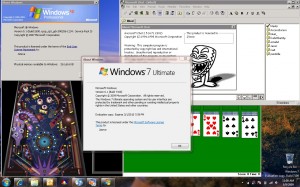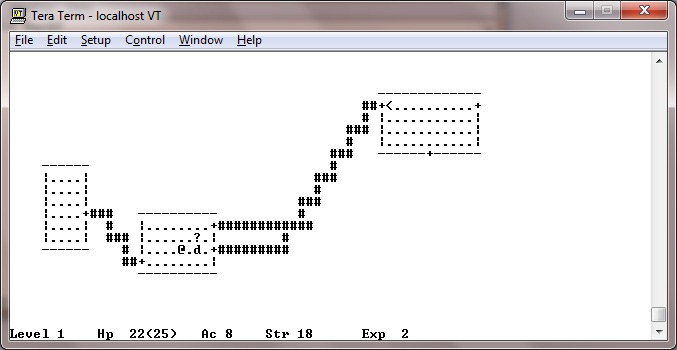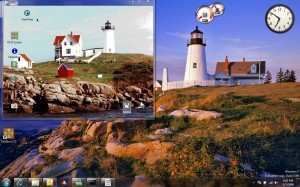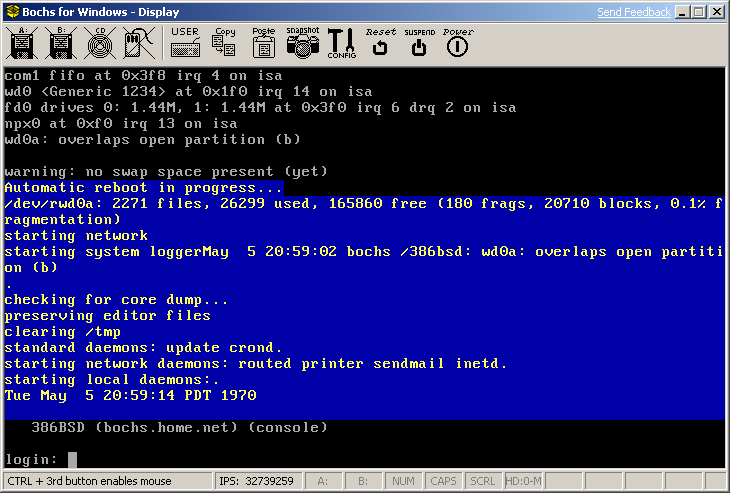 Well it seems to be all the rage in the world of emulation on Windows 7. Windows XP mode, from the user standpoint is just like the old days of WIN/OS2 from OS/2 2.0 and above.
Well it seems to be all the rage in the world of emulation on Windows 7. Windows XP mode, from the user standpoint is just like the old days of WIN/OS2 from OS/2 2.0 and above.
While WIN/OS2 used specialized device drivers that could ‘punch thru’ the virtual machine, and render each window on the OS/2 PM display, Windows XP mode, takes the Citrix like approach of using Terminal Services (RDP) to initiate a remote display to the local desktop.
Since RDP is the mechanism used, only XP and above will work, sorry Windows 2000 users. Another minor (is it?) annoyance is that the new version of Virtual PC has NO floppy driver support! It also seems to not have sound support, although it’s totally unverified at the moment. I’ll have to snag a VHD with MS-DOS pre-installed along with whatever integration tools I have around.
Anyways, the install is a snap, you can find all the components here.
Setup is straight forward, just install the Virtual PC component, then Windows 7 will want to reboot. Then install the Windows XP msi file (it’s over 450MB) and you’ll get a fully installed copy of Windows XP ready to go, and best of all you don’t have to configure anything. Start Windows XP in a “normal” desktop environment, install whatever it is you want to run. Publishing apps to the Windows 7 desktop is easy, just paste a shortcut under the “all users” start menu, and the screen will blink and it’s available.
The down side, is that other OS’s seem to perform poorly under this version of VPC. The mouse is very erratic on RHEL 4 that I had to setup to emulate a production environment. Also you need to have a CPU with the new virtualization extensions. It seems this VPC version is more like the hypervisor in 2008, then like the old Virtual PC we all knew. I almost wonder if there is a way to run VPC 2004 or 5 on Windows 7 natively for running older stuff…
It will be interesting to see where Microsoft goes with this, as this could leave a major rift in their product lineup. And as I’m sure a few people will find out, just because you have a ‘new’ machine doesn’t mean the CPU is up to the task… Not all new CPUs have the virtualization environment built in…
Another issue I’ve been having is that the network from time to time disconnects and will remain disconnected… It seems if you shut down & power the VM on/off (no hibernation!) eventually the NAT adapter will reconnect. Clearly it’s a beta. Also it won’t let you publish solitary, pinball, nor any of the other games. However it will let you publish cmd.exe so you can run them that way.




